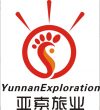
Xuan Paper/Rice Paper Made in Tengchong
Tengchong (腾冲市), a city rich in natural resources, is known for its production of Xuan Paper (宣纸), made from the bark of the rattan tree. Historically, the area produced fine, white, soft, and flexible cotton paper that was traded within the province and exported to Myanmar. Today, Tengchong Xuan Paper is considered a high-quality paper used for calligraphy and painting. It has gained widespread acclaim among artists for its softness and unique ability to absorb ink, allowing for rich layering and texture. As a result, it is a preferred choice for calligraphers and painters.
The production of Tengchong Xuan Paper has greatly developed over time, with production volume, quality, and export quantities now ranking second nationwide, only behind the famous Anhui Xuan Paper (安徽宣纸). Tengchong Xuan Paper is known for its white, fine, and flexible texture. It is commonly used for writing, painting, and archival purposes, and can preserve its color for hundreds of years, earning it the name “Millennium Paper” (千年寿纸).
The Origins and History of Xuan Paper
Origins and Etymology of Xuan Paper
Xuan Paper is one of China’s most traditional writing and painting papers, often paired with Hu brushes, Anhui ink, and Duan inkstones, collectively known as the Four Treasures of the Study (文房四宝). The paper was first produced in Jing County (泾县), Anhui Province, which is why it is also called “Xuan Paper.” Despite its origins in Anhui, Tengchong’s Xuan Paper has become well-known for its superior quality in terms of color, texture, and ink absorption, making it highly regarded among the art community.
Tengchong Xuan Paper has not only inherited the advantages of Anhui Xuan Paper but also possesses unique benefits. After painting on this paper, the artwork cannot easily be tampered with, making it an excellent choice for artists. The paper originated in the Qing Dynasty (清代) and was first produced in the Ganyintang area (观音塘) located to the northwest of the city. Because of its origin, it was initially called “Ganyintang White Paper” (观音塘大白纸). In the past, a merchant named Yu (余) from Southeast Asia specialized in the paper, which led to the alternate name “Yu Xuan” (余宣).
Tengchong Xuan Paper’s Recognition by Artists
At the end of 1941, renowned artist Xu Beihong (徐悲鸿) traveled from Southeast Asia to return to China via Tengchong and bought three loads of Tengchong Xuan Paper. He praised the paper for its superior qualities, noting that not only does it have all the advantages of Anhui Xuan Paper, but it also has a unique feature: once artwork is painted on it, it is difficult to tamper with. This made him believe that Tengchong Xuan Paper was an excellent choice for painting.
Features of Tengchong Xuan Paper
Tengchong Xuan Paper is prized for its delicate, soft, and durable texture. It has a fine texture, making it suitable for various uses such as writing, painting, printing, and recording contracts or official documents. The paper can retain its original color for hundreds of years, making it ideal for archival purposes.
Due to its versatility and durability, Tengchong Xuan Paper has found applications not only in the field of art but also in literature, record-keeping, and legal documents. The paper’s texture enhances the writing and painting experience, making it a beloved material among artists, calligraphers, and scholars.
The History and Development of Tengchong Xuan Paper
The Birth of the Tengchong Xuan Paper Factory
The original Tengchong Xuan Paper factory began as a handcraft cotton paper production cooperative in 1954. By 1974, it had grown into the Tengchong Xuan Paper Factory. Through continuous improvement of its processes, the factory succeeded in enhancing the product quality of its traditional Ganyintang Cotton Paper, enabling it to share many of the characteristics of Anhui Xuan Paper. In 1980, the factory’s “Snowflake Brand” (雪花牌) Xuan Paper was officially recognized by the State Administration for Industry and Commerce.
The raw materials for Tengchong Xuan Paper are locally sourced from the area’s rattan trees (Rhus chinensis), high-stemmed rice straw, and bamboo. The factory produces about 600 tons of paper annually, which is sold across China and exported to countries such as Japan.
The Ancient Paper-Making Tradition
Preserving the Ancient Paper-Making Techniques
In Tengchong’s Heshun Ancient Town (和顺古镇), visitors are often welcomed to observe and learn about the traditional paper-making techniques. Master paper-maker Teng Xuan (腾宣) has been working in the craft for seven years, and he continues to produce Tengchong Xuan Paper by hand with a small team of about five to six workers.
After tourists pass through the workshop, they can visit a small room in the workshop that displays various Tengchong Xuan Paper products. The door bears the sign “Ancient Paper-Making Techniques” (古法制纸), indicating the space where visitors can find traditional paper-makers at work. When I met Master Teng, he was sitting behind a large desk filled with Tengchong Xuan Paper items, writing with a brush. At first, he was not very communicative, but after some persistence, he shared that “this year, there has been a very small harvest of raw materials, and I am quite worried.”
The Raw Materials: Tengchong’s Rattan Tree Bark
The raw materials for Tengchong Xuan Paper are sourced from the rattan trees growing on the Dong Gao Li Gong Mountain (东高黎贡山) in Tengchong City. Master Teng explained that the original production of Tengchong Xuan Paper in Ganyintang (观音塘) was based on a craft and raw materials that had been moved from his hometown, which is near Gaoligong Mountain (高黎贡山). In recent years, due to the increasing pollution in the city, the area has become less suitable for collecting the necessary materials, and most of the high-quality rattan bark is now sourced from the rural areas near the mountains.
Master Teng’s village, located in Jietou Township (界头乡), is one of the few places where the rattan tree bark can still be found. “However, within the entire city, only three natural villages still have access to this tree bark,” he said. In these villages, many households engage in the manual production of Xuan Paper during busy farming seasons. “My family has been making paper by hand for over ten generations,” Master Teng shared.
The Harvesting Process and Timeframe
The harvesting of rattan bark is a delicate and time-sensitive process. The best time to harvest the bark is between March and May, during the flowering season, when the bark quality is at its peak. The harvesting window is short, with the best bark available only during these months, after which the quality begins to deteriorate. “By the time October and the frost season arrive, there will be no more suitable bark left to harvest.”
Although many people now recognize the superior quality of Tengchong Xuan Paper and rush to collect the rattan bark, only 80% of the villagers in Master Teng’s community are able to access it, leaving many others scrambling to secure the limited supply.
Tengchong Xuan Paper is an irreplaceable cultural heritage of the region, valued for its durability, fine texture, and unique aesthetic properties. From its traditional origins to the modern-day production process, the paper continues to be a symbol of artistic and cultural pride. As the demand for Xuan Paper grows, it is essential to preserve the ancient techniques and raw materials that make this craft so exceptional, ensuring that future generations can continue to appreciate and utilize this unique form of Chinese artistry.

 7 Days GolfingTour
7 Days GolfingTour
 8 Days Group Tour
8 Days Group Tour
 8 Days Yunnan Tour
8 Days Yunnan Tour
 7 Days Shangri La Hiking
7 Days Shangri La Hiking
 11 Days Yunnan Tour
11 Days Yunnan Tour
 6 Days Yuanyang Terraces
6 Days Yuanyang Terraces
 11 Days Yunnan Tour
11 Days Yunnan Tour
 8 Days South Yunnan
8 Days South Yunnan
 7 Days Tea Tour
7 Days Tea Tour
 8 Days Muslim Tour
8 Days Muslim Tour
 12 Days Self-Driving
12 Days Self-Driving
 4 Days Haba Climbing
4 Days Haba Climbing
 Tiger Leaping Gorge
Tiger Leaping Gorge
 Stone Forest
Stone Forest
 Yunnan-Tibet
Yunnan-Tibet
 Hani Rice Terraces
Hani Rice Terraces
 Kunming
Kunming
 Lijiang
Lijiang
 Shangri-la
Shangri-la
 Dali
Dali
 XishuangBanna
XishuangBanna
 Honghe
Honghe
 Kunming
Kunming
 Lijiang
Lijiang
 Shangri-la
Shangri-la
 Yuanyang Rice Terraces
Yuanyang Rice Terraces
 Nujiang
Nujiang
 XishuangBanna
XishuangBanna
 Spring City Golf
Spring City Golf
 Snow Mountain Golf
Snow Mountain Golf
 Stone Mountain Golf
Stone Mountain Golf











